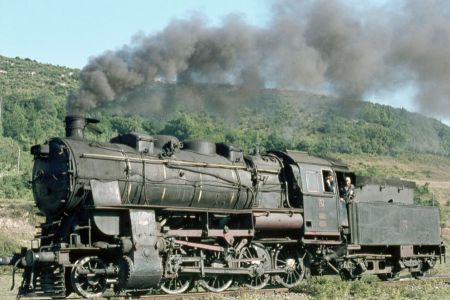125 years ago - Deutsche Bank got concession for Anatolian Railway
- Written by Portal Editor
An event of great symbolic power and historical significance happened in the summer of 1888, i.e. 125 years ago. With the first "Orientexpress" on the route from Vienna to Constantinople, the then Ottoman Empire had moved closer to Europe.
The journey of the "Orientexpress" was of great political significance and had effects that are still recognizable in some areas today.
The newspapers of Europe only write about the "sick man on the Bosphorus"
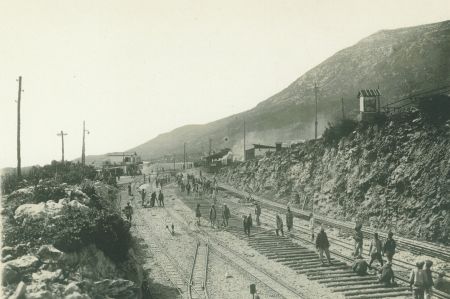 For decades, the Ottoman Empire of the 19th century had experienced a steady loss of political power due to outdated technology and a lack of infrastructure, especially in the area of transport. The newspapers of Europe only wrote about the "sick man on the Bosporus", the health of the patient "Ottoman Empire" was in poor shape. Sultan Abdülhamid II had the bold plan to build a railway line to catapult his empire, which still stretched from the Black Sea to the Persian Gulf and the Red Sea, into the modern age. A railway line was to connect Baghdad with Istanbul and thus with the whole of Europe. With the Baghdad railway, the Ottoman Empire was supposed to gain access to the European industrial nations. The Anatolian Railway was the first leg there.
For decades, the Ottoman Empire of the 19th century had experienced a steady loss of political power due to outdated technology and a lack of infrastructure, especially in the area of transport. The newspapers of Europe only wrote about the "sick man on the Bosporus", the health of the patient "Ottoman Empire" was in poor shape. Sultan Abdülhamid II had the bold plan to build a railway line to catapult his empire, which still stretched from the Black Sea to the Persian Gulf and the Red Sea, into the modern age. A railway line was to connect Baghdad with Istanbul and thus with the whole of Europe. With the Baghdad railway, the Ottoman Empire was supposed to gain access to the European industrial nations. The Anatolian Railway was the first leg there.
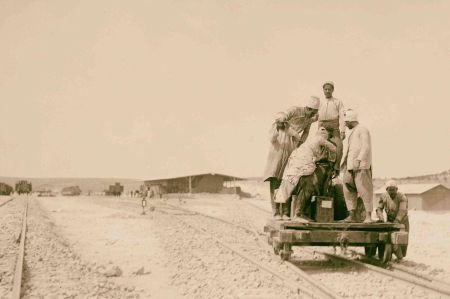 At that time, the Germans were the Ottomans' favourite partners, as they did not primarily have territorial gains in mind, but rather economic interests and access to raw materials. There were also old ties of friendship between the Ottoman Empire and the German Empire: German officers had been training Ottoman soldiers since 1882. The Ottoman Empire badly needed this modernization because it was (almost) hopelessly backward. At the turn of the 20th century, horses, camels and mules were still the main means of transport for people and goods. Moving goods or even troops from one half of the empire to another could take months. The Anatolian Railway as the first stage of this mammoth project should connect Istanbul with Konya in order to shorten the transport route of grain, fruit and vegetables to Istanbul to two days. With the completion of the route, the "motor" of a new mobility in the Ottoman Empire should emerge.
At that time, the Germans were the Ottomans' favourite partners, as they did not primarily have territorial gains in mind, but rather economic interests and access to raw materials. There were also old ties of friendship between the Ottoman Empire and the German Empire: German officers had been training Ottoman soldiers since 1882. The Ottoman Empire badly needed this modernization because it was (almost) hopelessly backward. At the turn of the 20th century, horses, camels and mules were still the main means of transport for people and goods. Moving goods or even troops from one half of the empire to another could take months. The Anatolian Railway as the first stage of this mammoth project should connect Istanbul with Konya in order to shorten the transport route of grain, fruit and vegetables to Istanbul to two days. With the completion of the route, the "motor" of a new mobility in the Ottoman Empire should emerge.
Siemens feared diplomatic complications with England
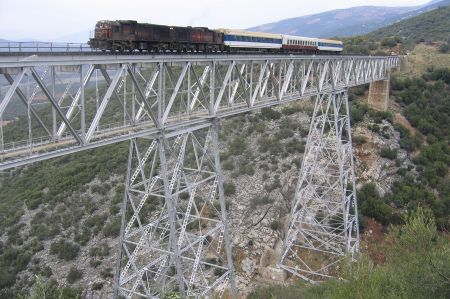 In the summer of 1888, Mr. Alfred von Kaulla was in Constantinople as a representative of the Württembergische Vereinsbank to handle some arms deals. During his stay, Kaulla received an offer from the Ottoman government to build and operate a railway line as far as Ankara. In addition to the already trusting cooperation with the German Empire, Sultan Abdülhamid also relied on German support because he wanted to limit the influence of France and England on the Ottoman Empire. As a representative of a then influential bank, Kaulla was understandably excited about the idea of investing in the railway line. However, the Württembergische Vereinsbank would not be able to shoulder the entire investment on its own, so further investors were needed. At this point, the head of Deutsche Bank, Mr. Georg von Siemens, came into play. Already known at that time as a "global player" for international activities, von Siemens feared diplomatic complications with England or France and therefore tried to use his political opportunities. Siemens received backing directly from the then Chancellor Otto von Bismarck, who wrote the following lines:
In the summer of 1888, Mr. Alfred von Kaulla was in Constantinople as a representative of the Württembergische Vereinsbank to handle some arms deals. During his stay, Kaulla received an offer from the Ottoman government to build and operate a railway line as far as Ankara. In addition to the already trusting cooperation with the German Empire, Sultan Abdülhamid also relied on German support because he wanted to limit the influence of France and England on the Ottoman Empire. As a representative of a then influential bank, Kaulla was understandably excited about the idea of investing in the railway line. However, the Württembergische Vereinsbank would not be able to shoulder the entire investment on its own, so further investors were needed. At this point, the head of Deutsche Bank, Mr. Georg von Siemens, came into play. Already known at that time as a "global player" for international activities, von Siemens feared diplomatic complications with England or France and therefore tried to use his political opportunities. Siemens received backing directly from the then Chancellor Otto von Bismarck, who wrote the following lines:
"In response to the question, I reply that there are no political objections to the application for a concession for railway construction in Asia Minor. The Imperial Embassy in Constantinople is already authorized to support German applicants for such concessions in their efforts."
Frankfurt construction company Philipp Holzmann received the order for the railway line
 The building contract was immediately started, so the Frankfurt construction company Philipp Holzmann, which was already well-known at the time, received the order for the railway line and also for the construction of the Haydarpasa terminal station in Constantinople. The rails were made by the Krupp company in Essen, and even the locomotives came from Germany. Even today, some of the old steam locomotives can be seen as exhibition specimens. If you travel along this old railway line today, even the small stations and signalman's houses are still clearly of German origin. The railway line to Ankara was completed just 4 years later. With the German technology of that time, a little German language material came to Anatolia, so the Ottoman station master called the German term "Ready" when the train was ready to depart. His job title was accordingly adopted into Turkish: "Fertikçi".
The building contract was immediately started, so the Frankfurt construction company Philipp Holzmann, which was already well-known at the time, received the order for the railway line and also for the construction of the Haydarpasa terminal station in Constantinople. The rails were made by the Krupp company in Essen, and even the locomotives came from Germany. Even today, some of the old steam locomotives can be seen as exhibition specimens. If you travel along this old railway line today, even the small stations and signalman's houses are still clearly of German origin. The railway line to Ankara was completed just 4 years later. With the German technology of that time, a little German language material came to Anatolia, so the Ottoman station master called the German term "Ready" when the train was ready to depart. His job title was accordingly adopted into Turkish: "Fertikçi".
This is how the Ottoman station master called the German term "Fertig"
 "The upper officials of the railway are almost exclusively German; in the lower positions one finds all nationalities represented; for the workers Turks are preferred, who always prove to be the most persistent and honest. The station managers and the conductors for the first two car classes speak French."
"The upper officials of the railway are almost exclusively German; in the lower positions one finds all nationalities represented; for the workers Turks are preferred, who always prove to be the most persistent and honest. The station managers and the conductors for the first two car classes speak French."
Another 4 years later in 1896 the route to Konya was put into operation. Konya was already an important trading centre for agricultural products in its time. With the help of the Anatolian Railway, the most important trading cities were now connected to Constantinople and it took only two days to transport grain, fruit and vegetables to the metropolis on the Bosporus.
The last station of the Anatolian Railway in Konya
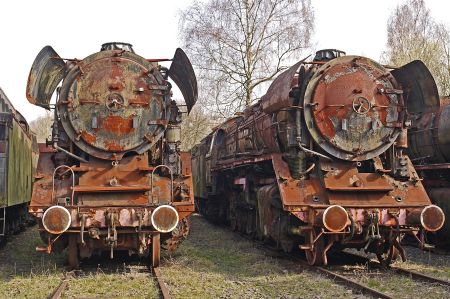 First Europeans who used the Anatolian Railway for their travels described their impressions as follows:
First Europeans who used the Anatolian Railway for their travels described their impressions as follows:
"A look into the coupés shows the same mixture of peoples as in most places in Turkey: Armenian farmers, Circassians, Greeks, Jews, Albanians, Arabs, gypsies - some rabble in rags, others in cleaner clothes, especially the Turks in their wide trousers and the kaftan over the colorful waistcoat."
In the course of the successful commissioning and the subsequent increase in trade flows, the railway company also received the concession to build the port of Haydarpasa in 1899. In 1903, construction of the actual Baghdad Railway began. The last station of the Anatolian Railway in Konya became the exit station for the Baghdad Railway.
Please read as well:
